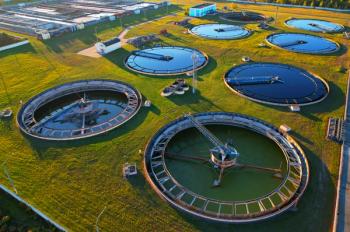
- The Column-04-28-2014
- Volume 10
- Issue 7
Fast, Single-Run Analysis of Polybrominated Diphenyl Ethers (PBDEs), Including Decabromodiphenyl (BDE-209)
This article addresses the contribution of thermal stability and column activity to BDE-209 breakdown and also describes an optimized method that resolves BDE-209 and other important congeners.
Polybrominated diphenyl ethers (PBDEs), which were formerly used as flame retardants, are aromatic, nonpolar compounds now included on the Stockholm Convention's list of persistent organic pollutants (POPs). Although their use has been restricted or banned in many areas, low levels of PBDEs can bioaccumulate in biological, environmental, and food sources resulting in detrimental health effects. Gas chromatography (GC) column technologies permit the fast quantitation of all PBDE congeners including decabromodiphenyl ether BDE-209 in a single analytical run, eliminating the need for the multiple columns and instrumentation traditionally required. Comparison of existing methods and the single-test method are included, highlighting improved sensitivity and shortened run times.
Polybrominated diphenyl ethers (PBDEs) consist of 209 individual conformations called congeners, which vary in toxicity. They are now included on the Stockholm Convention's list of persistent organic compounds (POPs).1 Analytical testing of these congeners is performed by high-resolution gas chromatography with high-resolution mass spectrometry (HRGC–HRMS) to achieve the lowest levels of detection possible. Despite this advanced instrumentation, accurate and well resolved separations of all congeners remains difficult.
Photo Credit: Kim Westerskov/Getty Images
PBDE analysis is historically problematic for two main reasons: the sheer number of compounds and analyte instability. In addition, some congeners are thermally labile, sensitive to column activity, or both. The most notorious of these reactive congeners is BDE-209 — decabromodiphenyl ether. Complete testing of BDE-209 is especially important because it can break down in the body or the environment to even more toxic congeners.
To resolve all 209 congeners, many laboratories analyze a single list of PBDEs using two separate tests. The first test uses a detailed method that resolves most congeners and traditionally uses a low polarity column of 60 m × 0.25 mm dimensions. This configuration typically results in nearly hour-long run times. As a result, the latest eluting congener BDE-209 frequently displays dramatically reduced peak response because of an extended exposure to thermal degradation and column activity.
Laboratories are therefore often forced to analyze this compound with a second method, using a separate instrument and a much shorter, thinner phase column to provide less retention. This allows a lower elution temperature and helps address thermal stability issues for BDE-209. However, thinner phase columns are often more susceptible to activity, leading to peak tailing and more difficult quantitation. This article addresses the contribution of thermal stability and column activity to BDE-209 breakdown and also describes an optimized method that resolves BDE-209 and other important congeners.
Experimental Conditions
Two experiments were performed. Excluding the oven programme (A and B), conditions were the same for both separations in experiment 1. Instrumentation used was a GC/ECD system (Agilent Technologies). Instrumentation used for experiment 2 was a HRGC–HRMS.
Experiment 1:
Description: Collection of BDE-209 thermal stability data; Column: 10 m × 0.18 mm, 0.18-μm, "general purpose" 5% phenyl-arylene phase (Phenomenex); Injection: Split 10:1 at 250 °C, 1 μL; Oven Programme: A: 100 °C for 1 min to 300 °C at 10 °C/min for 30 min, B: 100 °C for 1 min to 250 °C at 10 °C/min for 30 min; Carrier Gas: Helium at 3.0 mL/min (constant flow); Detector: Electron Capture (ECD) at 350 °C.
Experiment 2:
Description: PBDE congener separations on an application-specific 5% phenyl-arylene column deactivated specifically for reactive compounds; Column: 20 m × 0.18 mm, 0.18-μm, Zebron ZB-SemiVolatiles (Phenomenex), Injection: Splitless at 85 °C, 5 μL; Oven Programme: 70 °C for 1.25 min to 240 °C at 20 °C/min to 320 °C at 50 °C/min for 18 min; Carrier Gas: Helium at 0.85 mL/min (constant flow); Detector: High Res Mass Spec (HRMS) at 325 °C. A PTV in solvent vent mode with temperature programme to 320 °C in 2 min was used.
Results and Discussion
Breakdown of BDE-209 is often attributed solely to column activity, but this is not always the case. This is demonstrated in Figure 1, where PBDEs are injected under identical conditions with the exception of the final temperature using a traditional "general purpose" 5% phenyl-arylene GC column. The final temperature is elevated to 300 °C in run A but is limited to 250 °C in run B. Though BDE-209 elutes in less than 22 min in run A, the peak is small (with an area of only 345) and is preceded by the degradation product. Run B has a much longer 40 min retention time for BDE-209, resulting in increased reaction time with column activity. Degradation actually decreases, however, resulting in a broader, though much stronger, peak (with area 2731, 8× larger). This result contradicts the idea that BDE-209 breaks down solely because of column activity and demonstrates the impact of thermal lability on its degradation.
Figure 1: Demonstration of thermal stability of congener BDE-209.
When considered together with temperature, column activity plays a significant role in BDE-209 stability. In Figure 2, BDE-209 is analyzed using an application-specific 5% phenyl-arylene phase developed specifically to combat reactive compounds. The inset in the figure is an ion chromatogram for BDE-209, resulting in signal-to-noise of 815 for the peak — over 40× higher than commonly observed for BDE-209. Analysts performing PBDE screening in the food industry, for example, have shown signal-to-noise ratios as low as 20.
Figure 2: PBDE responses on a 5% phenyl-arylene phase with deactivation for reactive compounds.
Differences in column activity are affecting compound breakdown. Figure 2 shows that most congeners are nonreactive and elute early enough to escape significant thermal degradation. In addition, BDE-209 does not degrade on the column specifically deactivated for this type of activity — demonstrating the importance of column activity in addition to temperature stability.
Laboratories testing for PBDEs commonly use general-purpose columns that are not deactivated for a specific compound class, and are instead broadly applicable to many GC industries and methods. Though this makes them an attractive starting point for method development, an individual food or environmental laboratory is generally concerned only with their specific test. Application-specific columns are inherently designed to overcome method-centric challenges, and can therefore offer enhanced performance for a target application. In this example, the application-specific column is deactivated for challenges applicable to PBDE testing, such as BDE-209 reactivity in the presence of significant column activity, through differences in manufacturing. This includes using more sensitive test probes during the quality control (QC) process, standardizing analyte response requirements for key compounds, and testing at trace levels on-column, among other criteria. The result is a more targeted deactivation that better suits PBDE analysis.
This application-specific targeting allows analysts to run a single test that achieves both separation of the more toxic congeners and quantitation of BDE-209 in one run. Laboratories can now re-allocate free HRMS systems to other projects as well as reduce the quantity of columns that need to be purchased. Panu Ranatakokko, who is a senior researcher at the National Institute for Health and Welfare in Finland, describes one such example. "We have had great difficulties with the stability of BDE-209 with our previous general-purpose GC columns, and we were forced to use a very short column (6 m) for this specific compound instead of a regular 20–30 m column. To be able to run all PBDEs in one run we decided to test a 5% phenyl-arylene column deactivated specifically for reactive environmental compounds" said Ranatakokko. "With this column we are now able to successfully analyze our suite of PBDEs from BDE-28 to BDE-209 in a single run."
The deactivated column roughly halves the analysis time because there is no longer a need for a second injection with a shorter column, according to Ranatakokko.
Detailed separations of other key PBDEs are provided in Figure 3, including tribromo-, tetrabromo-, pentabromo-, hexabromo-, heptabromo-, and decabromo- biphenyl ether congeners using the application-specific column.
Figure 3: Separation of PBDE congeners.
Conclusion
The lack of stability of BDE-209 has forced some laboratories to add a second PBDE test to analyze this compound separately. This extra testing requires additional instrumentation, extra columns, and decreases the overall productivity of the laboratory. The breakdown of BDE-209 can be attributed to a combination of both temperature stability and column activity. If a laboratory is able to reduce either cause, the overall response of BDE-209 can be improved.
By using a GC column specifically deactivated for reactive analytes such as those found in PBDE testing, BDE-28 to BDE-209 can be analyzed in a single run.
This can save both time and money, resulting in decreased maintenance, increased revenues, and improved productivity.
Acknowledgements
We would like to thank Panu Rantakokko from the National Institute for Health and Welfare, Finland, for graciously providing data to support this work.
Reference
1. Stockholm Convention "Listing of POPs in the Stockholm Convention"
Kory Kelly received his MSc in analytical chemistry from New Mexico State University (Las Cruces, New Mexico, USA) and is the technical manager for GC and environmental applications at Phenomenex. In addition to providing technical training and on-site seminars, his current focus is optimizing and developing new environmental methods for customers and environmental agencies.
Kristen Parnell holds a MA in business administration from Boston University (Boston, Massachusetts, USA) along with BA degrees in economics and psychology from the University of California (Los Angeles, USA). She is the brand manager for GC columns and accessories at Phenomenex.
E-mail:
Website:
This article is from The Column. The full issue can be found here:
Articles in this issue
over 11 years ago
Beer Marinade Inhibits PAH Productionover 11 years ago
Analyzing Water Content in Solid Pharmaceuticalsover 11 years ago
Food Metabolomics in Practiceover 11 years ago
Incognito: The Power of Postersover 11 years ago
Gearing Up For Rivaover 11 years ago
Vol 10 No 7 The Column April 28, 2014 North American PDFover 11 years ago
Vol 10 No 7 The Column April 28, 2014 Europe and Asia PDFNewsletter
Join the global community of analytical scientists who trust LCGC for insights on the latest techniques, trends, and expert solutions in chromatography.





